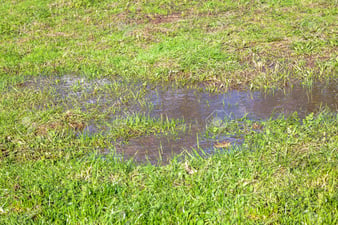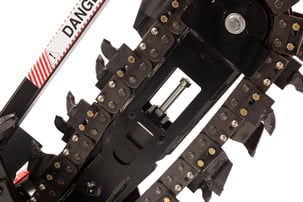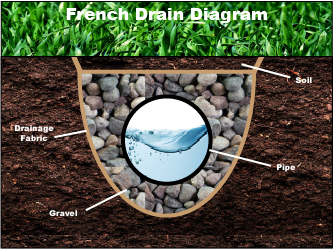Innovative Equipment Engineered to Last
Discover Barreto Manufacturing's 40 years of innovative, durable landscaping equipment, along with expert tips and local highlights for your projects.
How to Install a French Drain: 6 Steps to Achieving Proper Drainage

Improper drainage can lead to standing water in your yard, killing grass and ornamentals, while creating a breeding ground for those pesky mosquitoes. When that water is in close proximity to a foundation, it can also lead to leaky basements, mold and mildew buildup, and in extreme cases, damage to the concrete itself. French Drains (which in fact, are not French at all, but acquired the name in 1859 from their creator Henry Flagg French, of Concord Massachusetts) are designed to naturally carry water away from trouble areas in your yard.
Follow these six steps to achieve proper drainage:
Read First: How to Choose the Right Trencher: 5 Must Ask Questions Before You Trench
Prepare the Proper Supplies
-
Trencher
-
You will need about an 18”-24” digging depth and 6” minimum width. You may also consider an optional backfill blade accessory.
-
Gravel
-
¾” - 1 ½” sized gravel will allow water to flow into the pipe and prevent clogging. River gravel is ideal for optimum water flow.
-
Drainage Fabric
-
There are specific Geotextile fabrics designed for drainage. Be sure to invest in the proper materials and avoid textiles like weed barriers and visqueen.
-
Level
-
A level is needed to ensure your trench has the correct slope.
-
Pipe
-
Many manufacturers have designed specific pipes for french drains, from flexible tubing, to pre drilled pvc pipes, as well as more expensive gravel free options.
4-In. x 10-Ft. Perforated Polyethylene Sewer & Drain Pipe from True Value can be an affordable option.
Know Where to Dig
Before starting any project requiring ground work, always call 811 before you dig, and map out any underground utilities. After you have mapped out your digging area, you will need to determine where you are experiencing pooling. Is the water building up near the foundation, or creating a swamp in the yard? All of this water is also going to need an outlet, ideally a nearby body of water. In the event nearby water is unavailable, drainage ditches or curbside outlets may be an option. Once you have determined where you need to dig your trench, outline your trenching area with marking paint.
Know Your Digging Dimensions
A French drain needs to be surrounded by gravel in order to filter out silt and prevent clogging the drain pipe. Pre-drilled PVC pipe and flexible drainage pipes are commonly found in a 4” diameter. You will want at a minimum a 6” wide trench for a 4” pipe. The depth of the trench may vary some with each project, but an 18”-24” depth is generally a good standard.
Digging the Trench
One of the most important factors you need to prepare for when digging a drainage trench is the elevation grade. Ideally you are going to want a 1 - 2% grade. This means that you will need a downward slope of around 1-2 ½ inches for each 10ft of pipe. Keep that in mind when choosing your trencher. For example, on level ground, if you start with an 18” depth on a 50ft trench, your maximum depth will need to be 23”-28” at the outlet. There are many digital levels on the market designed to calculate grades in order to make this process easier.
Engineer Supply has a very helpful article to help you calculate the grade of your slope: Understanding Slope and How it's Measured
Preparing and Installing the Pipe
Once you have dug your trench and cleared it out, you will need to line it with the drainage fabric. This will prevent silt and roots from clogging the perforations in your pipe. After the drainage fabric has been placed, fill the trench with a few inches of gravel, taking care to fill evenly and maintain your slope. Next, lay the pipe into the trench keeping the pipe as centered as possible. Fill around and over the pipe with the remaining gravel.
return to top
Covering the Drain
Depending on the location of your drain, you may decide to re-cover the drain with turf. In this instance you will want to install a layer of the drainage fabric over your gravel before adding soil to prevent clogging. For longer trenches, your optional backfill blade accessory will come in handy. If your drain has been installed around a garden bed or bordering a foundation, there are some beautiful options for covering the drain with a layer of decorative gravel.
For more information on available decorative gravel types, check out this helpful article from Bruss Landscaping: 6 Types of Decorative Stones and Gravel
The Whole Process
For a start to finish example of the French drain process, this YouTube video gives a great idea of what it takes to install a French drain using a Barreto 712MT Trencher.
Remember to locate and identify any utilities before you begin your project. Always call 811 before you dig. Happy Trenching!
This post was originally published in June 2020 and has been refreshed and updated.

